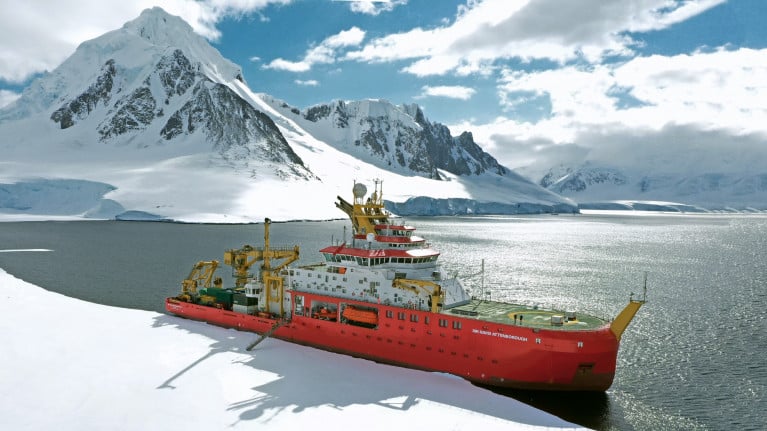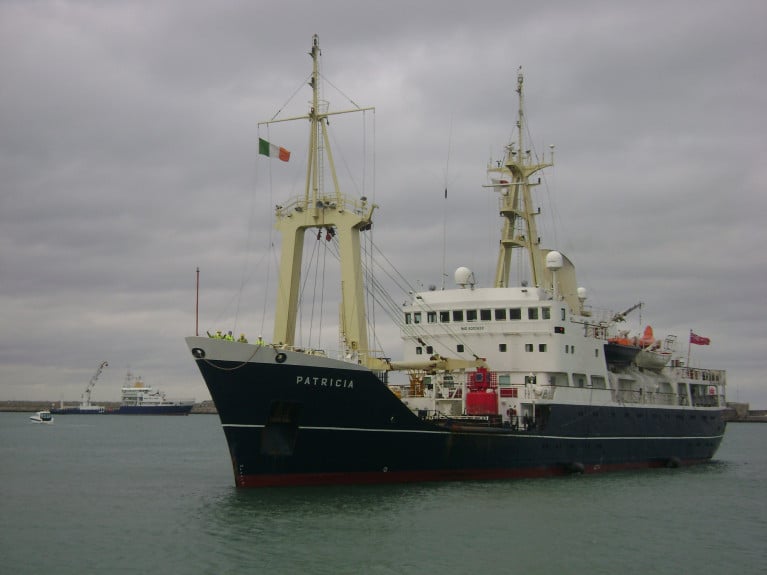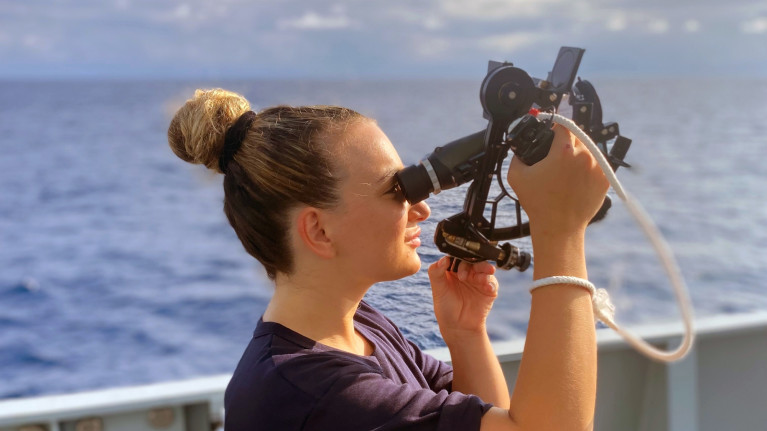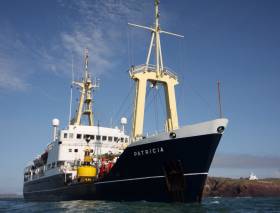Displaying items by tag: Trinity House
Trinity House Appoints New Chair on Lighthouse Board
Trinity House, the General Lighthouse Authority for England, Wales, and the Channel Islands, has appointed Lance Batchelor as the Chair of its Lighthouse Board, succeeding Sir Alan Massey.
Since becoming an Elder Brother in 2022, Lance has been sitting as a trustee on the Corporate Board as well as the Corporate Investment and Estates Committee; he was also Chair of the Corporate Audit and Risk and the Corporate Remuneration Committees.
In order to focus on his new role on the Lighthouse Board, he has relinquished his positions on the above committees.
Lance brings a wealth of leadership experience to the Lighthouse Board, having previously been Chief Executive at Tesco Mobile, Domino’s Pizza and Saga Cruises.
He is the Chair of Royal Museums Greenwich and the lead external director on the Royal Navy’s board. He served as a submariner in the Cold War and now holds the honorary rank of Captain Royal Naval Reserve (RNR).
The General Lighthouse Authorities (GLA) have announced a review of the Aids to Navigation (AtoN) provision around the coasts of Ireland and Great Britain.
Trinity House will publish the results of the review in 2025, the outcomes of which will inform the GLAs’ work plans for the following five-year period.
The GLA provide a comprehensive and sustainable network of AtoN for General Navigation and are responsible for the Superintendence and Management of Local AtoN provided by Local Lighthouse Authorities.
The GLA has said that they consider user input to be an essential part of this review. Users of AtoN are encouraged to contribute to the review by commenting on:
- The usefulness and usability of existing AtoN provided by the GLAs.
- Any proposed requirement for the provision of new AtoN.
- The mix of AtoN provided including lighthouses, buoys, beacons, Racons and AIS AtoN.
- The benefit to users of providing additional data from AtoN such as meteorological data.
- The effectiveness of systems used to promulgate information relating to AtoN.
- Any other AtoN related issues.
You can find the full details of how to respond to the Aids to Navigation Review on the Trinity House website. The closing date for responses is Friday 31 May.
Trinity House Appoints a New Director for Major Projects
Trinity House, the General Lighthouse Authority (GLA) for England, Wales, Channel Islands and Gibraltar, has recently appointed Damien Oliver as its new Director of Major Projects.
Damien’s appointment sees him as the lead on the Vessel Replacement Project, where he will work closely with internal and external stakeholders to drive forward the procurement process to a successful conclusion.
The Vessel Replacement Project is to replace the veteran aids to navigation tender, THV Patricia as Afloat previously reported dating to 1982, which made a rare call to Dun Laoghaire Harbour on the occasion of Irish Lights officially opening its new headquarters in 2008.
Damien joins Trinity House direct from a short-term secondment to Sellafield where he led major decommissioning programmes to make safe their 75-year-old nuclear legacy.
He also has over 20 years’ experience in senior roles within the Maritime Coastguard Agency (MCA) making him ideally suited to Trinity House as a GLA and our specific responsibility for navigational safety.
New Elder Brethren Welcomed by General Lighthouse Authority for England, Wales & Channel Islands
The General Lighthouse Authority (GLA) for England, Wales, Channel Islands and Gibraltar, Trinity House has welcomed three new Elder Brethren.
At a meeting of its Court today, 17 October, Trinity House swore in the three new Elder Brethren: Captain Fran Collins, Commodore Duncan Lamb and Rear Admiral Iain Lower joined the Court, the maritime corporation’s uppermost level of governance.
Captain Fran Collins MNM
Fran joined Red Funnel as CEO in June 2018, having spent over 20 years in the Merchant Navy.
Fran’s career as a seafarer started with a dual cadetship at South Tyneside College sponsored by Shell Shipping, qualifying in 1997 with both Deck and Engineer (Steam & Motor) licences.
In 2008, Fran transferred into shore-based management and since then has continued to develop her career through several executive roles that have included operational management, business leadership and the delivery of major strategic projects, several of which involved significant and extensive stakeholder management.
Alongside her role as CEO at Red Funnel, Fran also provides support to Saga Cruises as a Non-Executive Director as well as being an active member of a number of industry bodies at a strategic level, including the Department for Transport’s Clean Maritime Council and the Isle of Wight’s Chamber of Commerce.
In November 2019, Fran received the Merchant Navy Medal for her contribution to the shipping industry.
Commodore Duncan Lamb CMMar AFNI RFA (Retd.)
Duncan retired as Head of Service for the Royal Fleet Auxiliary (COMRFA) in October 2020. In this role he was responsible for the safe operation of the flotilla and the recruitment, training and management of 1,900 UK civilian mariners.
As part of the Royal Navy’s senior management, he was the Senior Responsible Owner for replacement fleet tankers, a £560 million project within the Government’s Major Programme Portfolio that delivered four ships into service during 2016-19. He was involved in a comprehensive personnel change programme for the RFA that he then delivered as COMRFA. An advocate for diversity and inclusion, he was an early signatory to Maritime UK’s Women in Maritime initiatives and senior ethnicity champion for Navy Command HQ.
Since retiring, he remains professionally active and is a Warden of the Honourable Company of Master Mariners (HCMM) and an advisor for the RNRM Charity. He chairs the Chartered Master Mariner Registration Authority, which governs Chartership on behalf of HCMM and the Nautical Institute.
Rear Admiral Iain Lower CB MA AFNI
Following the announcement by Trinity House in September that Rear Admiral Iain Lower had been nominated to succeed Captain Ian McNaught in February 2024 as the Deputy Master of the Corporation and Chief Executive Officer of the General Lighthouse Authority, he was sworn in as an Elder Brother in advance of February’s Court meeting.
Iain joins Trinity House from the Commonwealth War Graves Commission following a distinguished career in the Royal Navy.
On promotion to Rear Admiral, Iain became the Royal Navy’s Director of Strategy, Policy, and External Affairs. An executive member of the Navy Board, he was responsible for strategic planning, policy alignment, international liaison, reputation management and public affairs including relations across Whitehall, think-tanks, academia, and the maritime sector.
At the Commonwealth War Graves Commission, as the Director of Strategy, Communications & Commonwealth Affairs, he led the development and implementation of the new organisational strategy. Iain is also a trustee of The Seafarers’ Charity.
Welcoming the new members to the Court, Deputy Master Captain Ian McNaught said: “I am pleased that we are able to build upon the Court’s strengths with the experience and intellect that Fran, Duncan and Iain bring as new members. The Court oversees the Lighthouse Board and the Corporate Board, and so it is important to us that we bring fresh new perspectives and insights to the table, to ensure that we are operating at our best when we provide our best-in-class safety at sea and maritime welfare and training services.
“I look forward to working with them, and wish to express my gratitude to them for joining our organisation.”
Trinity House is a charity dedicated to safeguarding shipping and seafarers, providing education, support and welfare to the seafaring community with a statutory duty as a General Lighthouse Authority (GLA) to deliver a reliable, efficient and cost-effective aids to navigation service for the benefit and safety of all mariners.
Trinity House In Partnership With Agri-Foods and Biosciences Institute Enhance Opportunities to Merchant Navy Cadets
The General Lighthouse Authority (GLA) for England, Wales and the Channel Islands, Trinity House have partnered with the Agri-Foods and Biosciences Institute (AFBI) to enhance opportunities to Merchant Navy cadets.
The Merchant Navy Scholarship Scheme (MNSS) will create new Deck and Engineer cadet berths for young people seeking careers in the Merchant Navy see related previous Afloat coverage.
Part of Trinity House’s Merchant Navy Scholarship Scheme, the initiative will see AFBI place Trinity House cadets on board their research vessel MV Corystes, typically for six to eight weeks. The initiative is supported by Just Be Maritime, which will be managing the cadets.
Philip Jeffers, Research Vessel and Marine Systems Manager at AFBI, said: “The Agri Foods and Biosciences Institute (AFBI) is excited to be engaged with Trinity House to provide training facilities on board our 52m Research Vessel, Corystes. AFBI is a leader in developing scientific skills within Northern Ireland delivering impactful and sustainable outcomes for society, the economy and the natural environment. Cadet training, knowledge and competence development is a further extension of our capabilities to deliver for Northern Ireland and in the wider UK region.”
Captain Nigel Hope, Director of Maritime Training at Trinity House, said: “Trinity House working with the Agri Foods and Biosciences Institute is more great news and another important addition to the breadth of our Merchant Navy Scholarship Scheme.”
“The AFBI’s excellent training berths on MV Corsytes will offer Trinity House Deck and Engineer cadets valuable experience and knowledge towards their professional qualifications. Special congratulations to Engineer Officer cadet Zaidan, the first of our cadets to join MV Corsytes. We look forward to hearing more about this new cadet experience.”
To find out more about the Merchant Navy Scholarship Scheme, visit here.
The General Lighthouse Authority (GLA) for England, Wales and Channel Islands, Trinity House is joining forces with Hill Robinson to create a new pathway for young people seeking careers as officers in the superyacht industry.
Part of Trinity House’s Merchant Navy Scholarship Scheme, the initiative will see Hill Robinson and Trinity House sponsor four cadets in undertaking a three-year officer cadetship, leading to Maritime and Coastguard Agency (MCA) certification as a Deck or Marine Engineer Officer of the Watch (Unlimited).
The initiative is supported by Just Be Maritime, which will be managing the cadets, and Warsash Maritime School as training provider. Hill Robinson will be fully engaged in the cadet recruitment and selection process and successful candidates will have the possibility of employment on board a Hill Robinson-managed yacht as their careers progress.
Paul Cook, Chief Operating Officer of the Hill Robinson Group, commented; “We recognise that crew play a fundamental role in ensuring excellent operational and technical standards onboard our yachts to fully realise our client’s expectations. That is why Hill Robinson is delighted to be partnering with Trinity House to introduce newcomers to the superyacht industry and support them in achieving their career aspirations. Investing in young people is very close to our hearts, and we look forward to providing the young cadets with that first step into the superyacht industry.”
Captain Nigel Hope, Trinity House’s Director of Maritime Training, said of the new venture: “This new joint venture with Hill Robinson to match fund training for Merchant Navy Cadets on superyachts is a great enhancement to our Merchant Navy Scholarship Scheme. These exciting Deck and Engineer opportunities are a welcome commitment to not only a high standard of superyacht training for a growing sector, but also to supporting those from diverse backgrounds and who would benefit from financial and professional support.”
To find out more about the Merchant Navy Scholarship Scheme, please visit this website.
Merchant Navy Cadets from Trinity House Join Prestigious Polar Research Vessel RRS Sir David Attenborough
Merchant Navy Cadets of Trinity House will now be training with the British Antarctic Survey (BAS) on board their new state-of-the-art polar science research vessel RRS Sir David Attenborough (see, sea-trails story of last year)
The four merchant cadets will be joining the vessel for the first time in May 2022 for a four-month training deployment. During their time on board, the cadets will undertake a range of activities and tasks as part of completing their MNTB Training Record Books, including vessel familiarisation, maintenance work and watchkeeping duties.
RRS Sir David Attenborough is one of the most advanced research vessels in the world and is set to transform ship-borne science in the Polar Regions. The ship was commissioned by NERC, built by shipyard Cammell Laird and is operated by BAS.
BAS took delivery of RRS Sir David Attenborough in November 2020 and the ship departed the UK for its maiden voyage on 17 November 2021. The ship is currently sailing back to the UK following a successful first season in Antarctica, under the command of former Trinity House Merchant Navy Scholarship Scheme Cadet Captain Will Whatley.
Captain Nigel Hope, Director of Maritime Training for Trinity House, remarked: “We are delighted BAS have selected Trinity House cadets to train on board RRS Sir David Attenborough, as the training opportunities that BAS can provide will be invaluable. Trinity House cadets train on board a variety of different vessels during their sea phases. We are looking forward to working with BAS on this long-term partnership.”
Captain Will Whatley, Master of RRS Sir David Attenborough, says: “I started my career at sea as a Trinity House Cadet myself so it gives me great pleasure to be able to welcome this first group of cadets aboard our incredible new ship. This trip will give the cadets a fantastic experience as this ship has so many interesting features. I look forward to having Trinity House cadets on board RRS Sir David Attenborough for many years to come.”
General Lighthouse Authority Trinity House Makes Major Milestone With Ship Replacement Project Approved
The General Lighthouse Authority (GLA) for England, Wales and Channel Islands, Trinity House which has a project to commission the design and build of a vessel to replace THV Patricia has reached a major milestone following UK Ministerial approval to go forward to the tender phase.
Trinity House first announced the project on 9 September 2019, when the then-Maritime Minister Nusrat Ghani MP gave her support to the recommendation that the three GLA's of the UK and Ireland (along with the Northern Lighthouse Board and Irish Lights) needed a total of seven vessels to carry out their essential statutory functions.
This vessel will replace the multi-function THV Patricia, delivered in 1982 and reaching the end of its operational life. (Afloat adds the NLB, responsible for Scotland and the Isle of Man, is to replace one their buoy-laying vessels, NLV Pole Star)
Following the Minister’s approval (last month), Trinity House has issued an Invitation to Tender to reach out to the shipbuilding sector to identify a contractor that will deliver the design and build of a vessel that will support Trinity House at sea as it provides its aids to navigation services.
Secretary of State for Transport The Rt Hon Grant Shapps MP spoke of the importance of Trinity House’s milestone: “As an island nation with a rich maritime history, Britain is the best place in the world to build ships and this is a tremendous moment for the UK shipping sector.
“We are buying a new vessel for Trinity House which will be going out to tender shortly – this is a great opportunity for UK businesses to demonstrate their competitiveness in the sector. This will ensure our Trinity House has the modern and green vessel they need to continue to ensure the safety of all mariners.
“We’re also doing more than ever to power forward the UK maritime sector, supporting jobs and propelling a green recovery as we work with the sector to build a thriving industry for generations to come.”
Trinity House’s Deputy Master Captain Ian McNaught commented on this achievement and what comes next for the project: “I am delighted that we are one step closer to getting a new ship in the water, and so I want to thank not only the Minister but also the project team for the enormous efforts put in so far and of course the ships’ crews working at all hours on our marine operations.
“We will be looking closely at the tender submissions and we hope to see some great ideas that will make good use of technological and environmental innovations while also providing good value for money.”
Cadets from Trinity House to Join UK Royal Navy Ships in New Merchant Navy Training Link-Up
Trinity House which is the General Lighthouse Authority responsible for England, Wales and the Channel Islands, is in an exchange scheme between the UK Merchant Navy and the Royal Navy.
The Merchant Navy Cadets sponsored by Trinity House as part of its Merchant Navy Scholarship Scheme will be part of an exchange involving the Merchant Navy and the Royal Navy.
The exchange will place 30 Merchant Navy Cadets (majority of whom are Trinity House-sponsored) on board Royal Navy ships this winter. This arrangement is part of a long-standing agreement which has given trainee Royal Navy officers the opportunity to sail on merchant vessels, giving them extra time at sea, especially on the bridge.
Before the pandemic, nearly 150 Royal Navy officers spent time with the Merchant Navy—including helping to crew cross (English) Channel ferries for an insight into safely guiding a ship through busy waters.
To offer something by way of return, the Royal Navy has now formalised a reciprocal arrangement.
Merchant Navy Cadets will spend three months at a time on patrol and survey ships to help with their training and give them a greater understanding of the Royal Navy’s role.
One such officer is Trinity House Deck Cadet Scarlett Barnett-Smith (pictured above), who is currently on transfer to Royal Navy patrol ship HMS Tamar (see fishery dispute story from earlier this year).
She says the time attached to the patrol ship on a “once-in-a-lifetime passage” has been a hugely rewarding experience; HMS Tamar has just entered the Pacific via the Panama Canal.
“The immensely dedicated crew have been extremely welcoming and helpful, allowing me to grow and understand the responsibilities as a sailor of the Royal Navy,” she said.
“I’m looking forward to one day seeing HMS Tamar from the bridge as an Officer of the Watch in the Merchant Navy, and will think fondly of her throughout my career.”
The first batch of Merchant Navy officers are due to join their ships this month having completed their navigational training.
Administering the scheme in his capacity as the Royal Navy’s Merchant Navy Liaison Officer is Lieutenant Commander David Carter, also a Younger Brother of Trinity House.
“This is something of a novel concept for the Royal Navy but it runs alongside several strands of the Merchant and Royal Navy coming closer together in the maritime sphere for multiple ‘wins’,” he explains.
“All the Merchant Navy cadets who have sailed with the Royal Navy so far have loved it and these cadets will be the next generation of influencers who will have the Royal Navy close to their hearts.”
Naturally, the exchange scheme will continue to send Royal Navy and Royal Marines personnel on board Merchant Navy vessels for voyages that can last from one week to three months on a variety of vessels, including cargo and container ships, fast-craft, passenger ferries, Ro-Ros and tankers. While on board, they participate in their share of duties, including watch keeping, loading and discharging cargo, machinery space routines, domestic activities and—where appropriate—passenger care.
Trinity House’s Director of Maritime Training Captain Nigel Hope remarked of the newly-formalised initiative: “Our Merchant Navy Scholarship Scheme has a great new pull for future candidates with this new learning exchange.
“This development adds significant breadth to an already industry-leading cadetship offering for young people who want to take up one of the best possible careers out there. For anyone looking at a career at sea and its wealth of benefits, both personal and professional, I urge you to take up a Trinity House Cadetship through the MNSS.”
For further information on the scholarship scheme click here.
Irish Lights English Counterpart Trinity House to Commission New Vessel Announced At LISW19
Irish Lights counterpart serving the waters of England, Wales and the Channel Islands, Trinity House has launched a Vessel Replacement Project to commission the design and build of a vessel to replace THV Patricia. The vessel was delivered in 1982 and is reaching the end of its operational life.
The announcement was made at a launch event at Trinity House in London yesterday, during London International Shipping Week (LISW19). Attending the event was Maritime Minister Nusrat Ghani and where a contract notice was issued to the shipbuilding industry to open the procurement process.
The Minister announced her support for the project in July 2019, following a comprehensive Fleet Review that concluded that the three General Lighthouse Authorities of the UK and Ireland (Trinity House, Northern Lighthouse Board and Irish Lights) require seven vessels to deliver their critical aids to navigation service.
The new vessel will look to harness technological and environmental innovation to ensure that Trinity House continues to provide over 600 critical aids to navigation—such as lighthouses and buoys—for ships and seafarers in some of the most dangerous waters in the world, guiding them into safe channels away from hazards and wrecks.
Nusrat Ghani, Maritime Minister, said: “95% of our imports and exports are transported to and from the UK by sea and, with our waters becoming even busier, dealing with incidents quickly and efficiently is more important than ever. This new ship will support the General Lighthouse Authority to help future-proof their fleet and continue to support maritime trade for generations to come.”
Captain Ian McNaught, Executive Chairman of Trinity House, said: “We were pleased to hear that the Maritime Minister was content for us to move the Vessel Replacement Project closer towards the design and build phase. While we must ensure that value for money is central to the design, we will also be looking for new, tested and robust technologies in the vessel design; these technologies will need to offer high performance and resilience and also reduce our environmental impact.”
































































